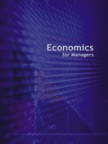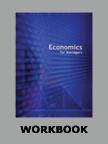Corporate Turnaround of Pharmacia & Upjohn




|
|
ICMR HOME | Case Studies Collection
Case Details:
Case Code : BSTR255
Case Length : 17 Pages
Period : 1995-2006
Pub Date : 2007
Teaching Note :Not Available
Organization : Pharmacia & Upjohn
Industry : Pharma
Countries : US / Sweden
To download Corporate Turnaround of Pharmacia & Upjohn case study (Case Code:
BSTR255) click on the button below, and select the case from the list of available cases:

Price:
For delivery in electronic format: Rs. 400;
For delivery through courier (within India): Rs. 400 + Rs. 25 for Shipping & Handling Charges
» Business Strategy Case Studies
» Case Studies Collection
» Business Strategy Short Case Studies
» View Detailed Pricing Info
» How To Order This Case
» Business Case Studies
» Case Studies by Area
» Case Studies by Industry
» Case Studies by Company
Please note:
This case study was compiled from published sources, and is intended to be used as a basis for class discussion. It is not intended to illustrate either effective or ineffective handling of a management situation. Nor is it a primary information source.
|
|
<< Previous
Excerpts
About Upjohn
|
Upjohn was founded by William Erastus Upjohn (William Erastus), a doctor, and
his brothers as The Upjohn Pill and Granule Company in the year 1885. In 1886,
the company employed 12 people and manufactured more than 180 medical formulas
using botanicals and chemicals. In the first year of its inception, the
company's sales were at US$ 50,000, mainly due to 'friable pills ' that crumbled
and dissolved easily. The friable pill was the first of its kind and could be
crushed with the press of the thumb. The illustration of this property became
the company's trademark (Refer to Exhibit III for a visual of Upjohn's Friable
pills). In 1890, the sales of the company stood at US$ 132,500...
|
|
About Pharmacia
Pharmacia was founded in 1911 in Stockholm, Sweden, by CM deKunwald. The
company's first product was phospho-energon energy pills made from animal
products and in the first year, the company's turnover was Skr 20,000 . The drug
became the mainstay of the company, accounting for over 30% of the sales for
several years. Phospho-energon was also sold in several countries.
Not relying on a single product, Pharmacia came up with several new products
like Cedrolinol, produced from Cedar wood, for treating rheumatic complaints in
1912. In 1913, Pharmacia brought out Sodamint to treat stomach complaints and
Paraform containing formaldehyde for treating throat infections...
|
|
Rationale for the Merger
Pharmacia and Upjohn had comparable market values and the merger was
touted as a merger of equals. Before the merger, Upjohn had been the
world's 19th largest pharmaceutical company and Pharmacia the 18th
largest.
At the time of the merger, Upjohn was weak in terms of R&D
compared to its competitors in the industry. Its patents on several
drugs like Xanax had expired. With no profitable drugs in the pipeline,
the company was seeking a European partner. |
Zabriskie was of the view that a friendly merger would give
the company more markets for its products and help it enhance its growth.
Pharmacia's Genotropin, a growth hormone, was facing problems due to severe
price competition. The company was also looking for a new distribution and
marketing network to distribute its products in the US...
Excerpts Contd...>>

|



